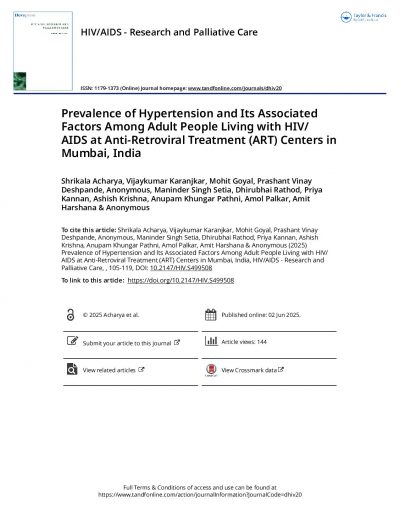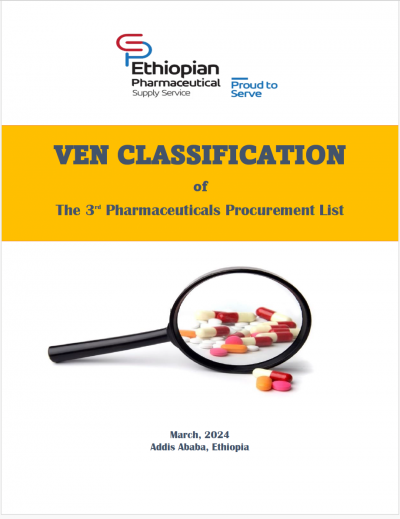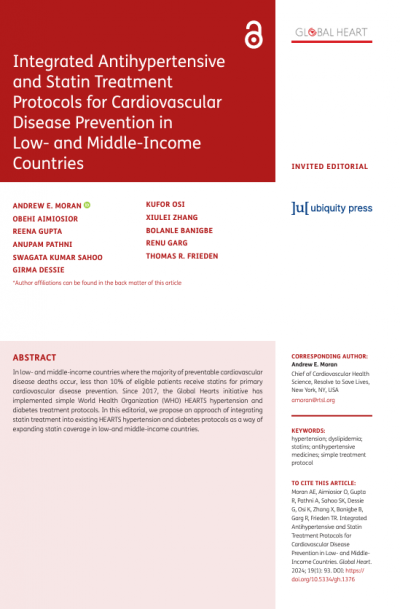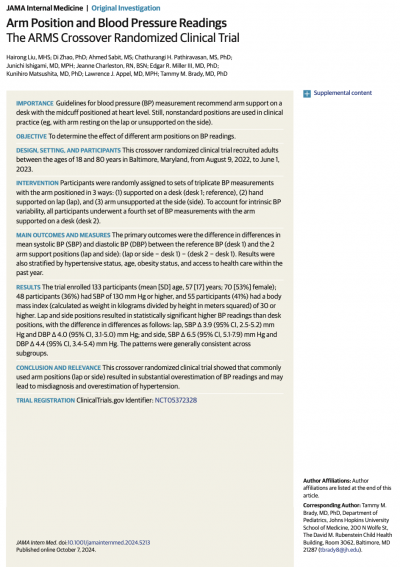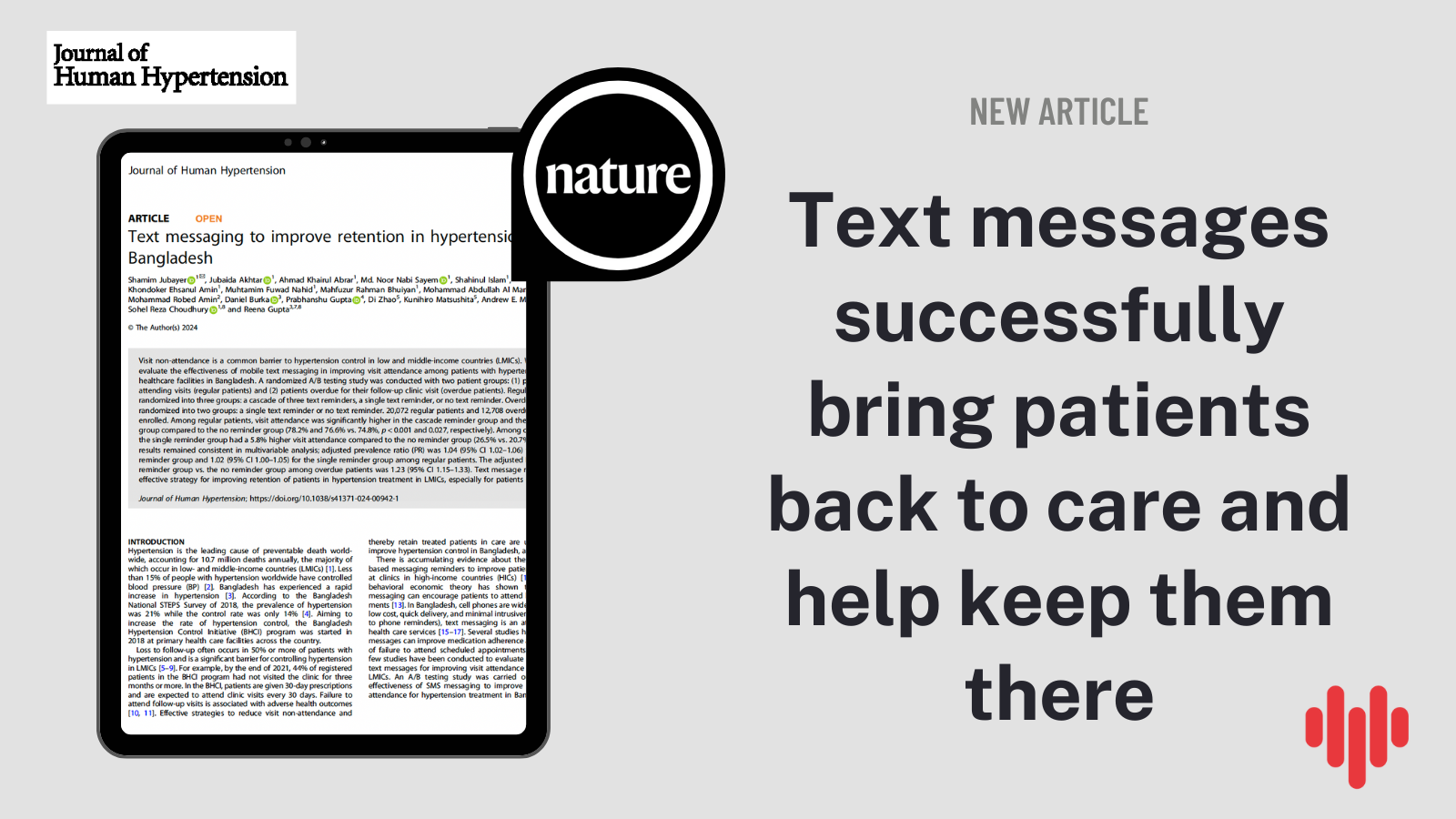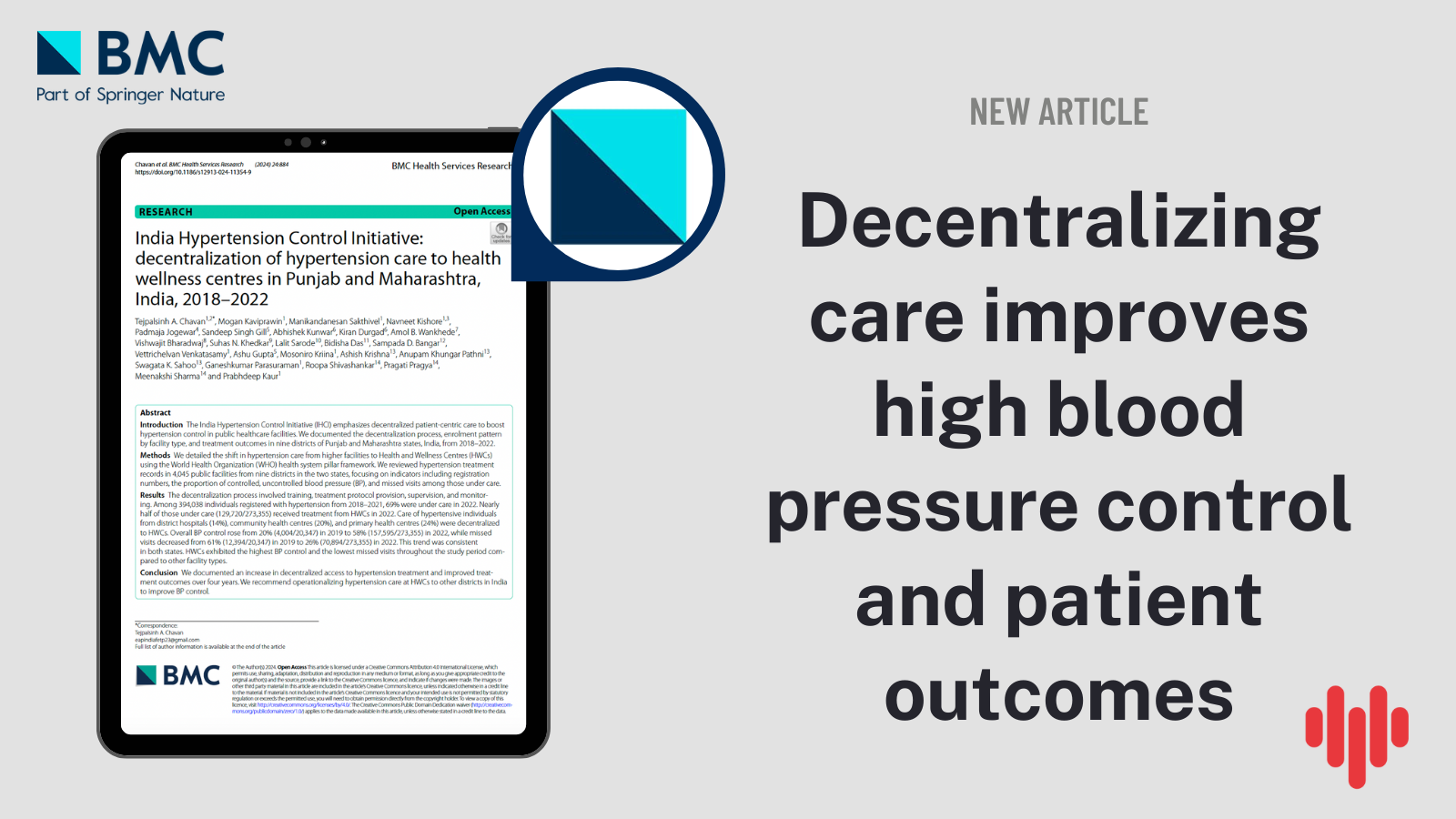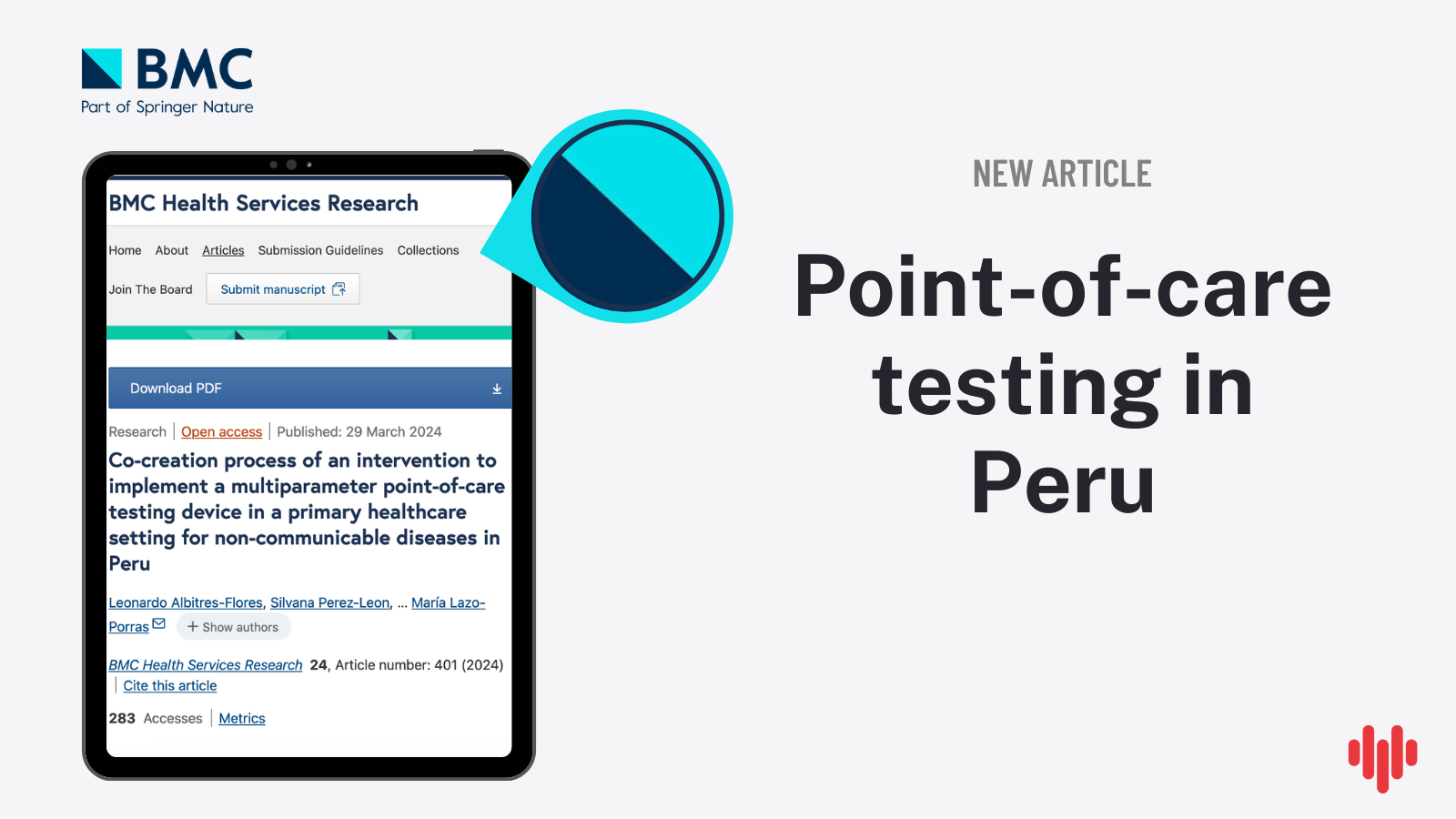Patient-centered hypertension care
Patient-centered care
When hypertension treatment is accessible, affordable, and easy to stick to, more people stay on track.
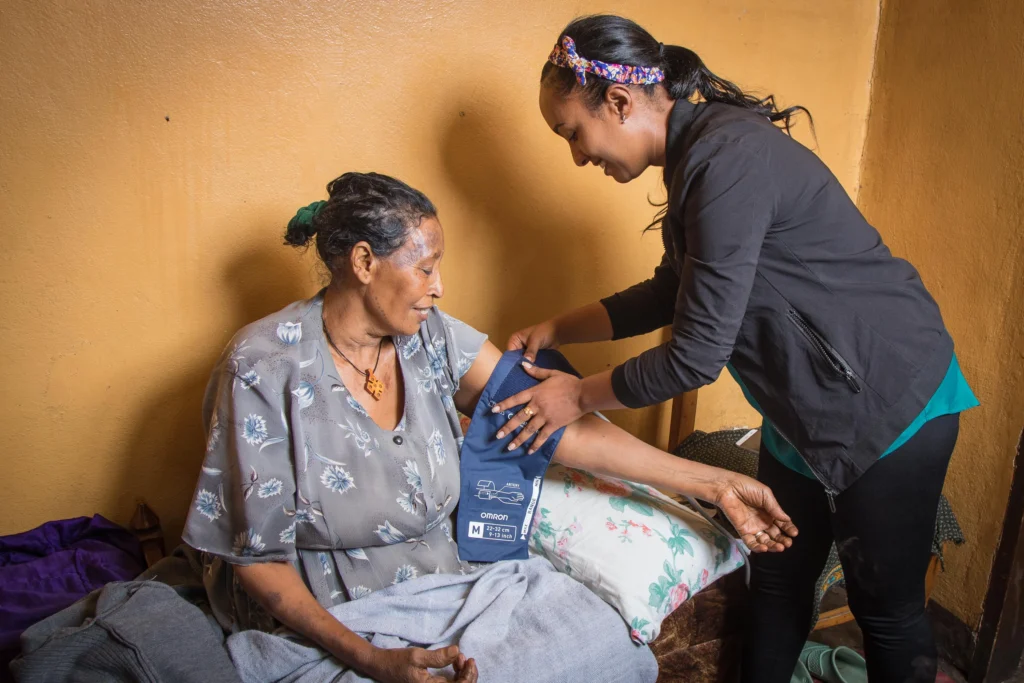
The challenge
The solution
Simple changes to care delivery such as multi-month prescriptions for eligible patients, and providing care closer to where people live and work can all make a big difference in patient outcomes.
The impact
Removing barriers to accessing care and staying on treatment makes it easier for patients to control their blood pressure and live longer, healthier lives.
Explore
New study encourages health care closer to home
In India, decentralized hypertension care led to better blood pressure control and patient outcomes
Integrating hypertension treatment with HIV care in Uganda
Using a Differentiated Service Delivery approach to integrate hypertension and HIV care in the communities where people live
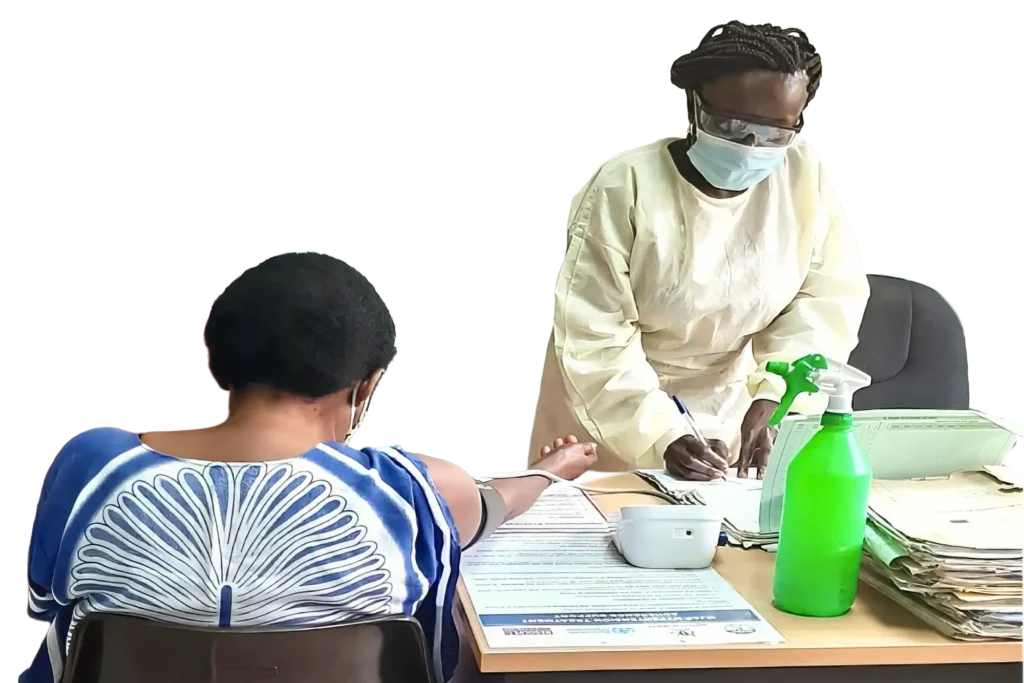
Doorstep medicine delivery for high-risk patients in India during COVID-19 lockdowns
Bringing medication to patients helped keep them on track during the pandemic
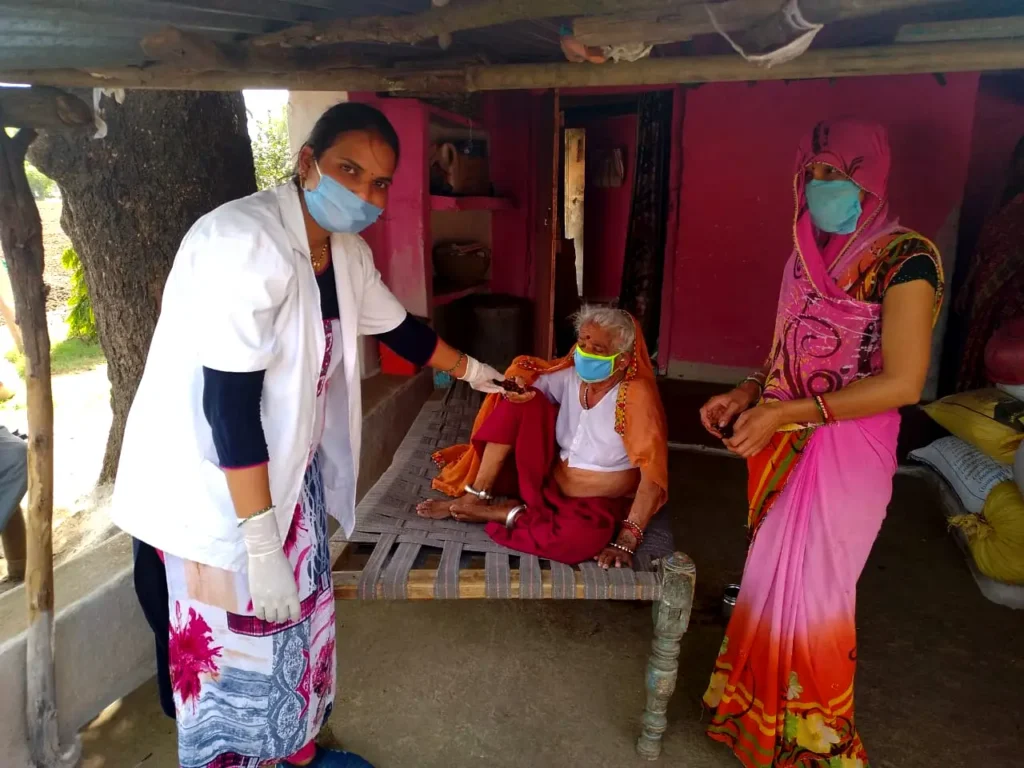
Partners
World Health Organisation (WHO)
Benchmarks for health emergencies
We partner with the World Health Organization to standardize best practices for preparedness, including developing a benchmarking tool to simplify and accelerate preparedness planning under International Health Regulations.
The cost of health care worker infections
In our advocacy efforts to protect health care workers, we released a joint report with the World Bank to calculate the true cost of health care worker infections during the COVID-19 pandemic, as well as wider socioeconomic implications.
In depth
How patient-centered care saves lives
While treating high blood pressure with a primary care doctor close to home has been the norm in high-income countries for decades, people living with hypertension in many low- and middle-income countries still face high barriers to getting their blood pressure under control.
Patients are often forced to travel long distances to specialized hospitals for care, prescribed expensive medications that can be hard to find, and might have to choose between getting their life-saving medication and putting dinner on the table. This makes them likely to miss medical visits, stop taking their medications, and risk life-threatening consequences.
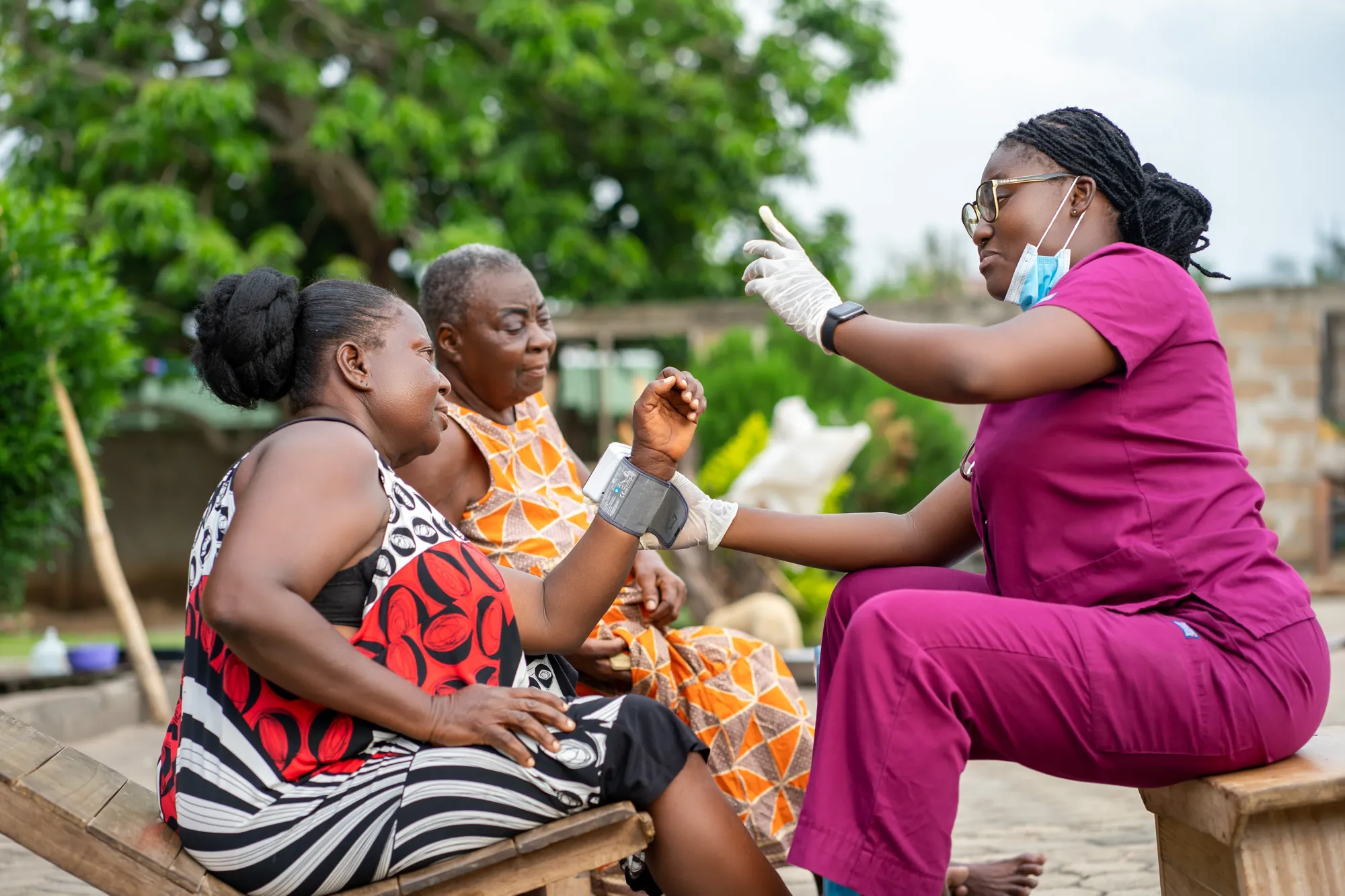
Patient-friendly blood pressure management
Accommodating patient needs with a few simple shifts in care delivery is a low-cost, high-impact strategy that’s proven to help people living with high blood pressure keep it under control and reduce their risk of a heart attack or stroke. Following simple, standard treatment protocols and practicing team-based care can make it possible for programs to include patient-friendly care options such as:
- Routine care closer to home
- Easy medication regimens
- Access to free or low-cost medications
- Less frequent follow-up visits for patients who are doing well on treatment
- Longer prescriptions—and fewer trips to the pharmacy
- Measuring blood pressure at every health visit—not just for blood pressure care
Integrating blood pressure management with routine health services
Patient-centered services meet patients where and when they need care—and treating them efficiently so they spend less time at the clinic. Some people living with multiple chronic conditions like HIV or diabetes attend multiple appointments for each condition, so integrating routine services means patients don’t have to visit the clinic as frequently, and health facilities are less crowded and more effective.
How we support patient-centered care
We provide catalytic funding and technical assistance to improve hypertension care—from streamlining prescriptions to strengthening procurement and distribution of medicines to training and developing team-based care teams. These efforts help strengthen primary care facilities to provide quality care closer to home, and keep medicine supplies reliable and affordable.
